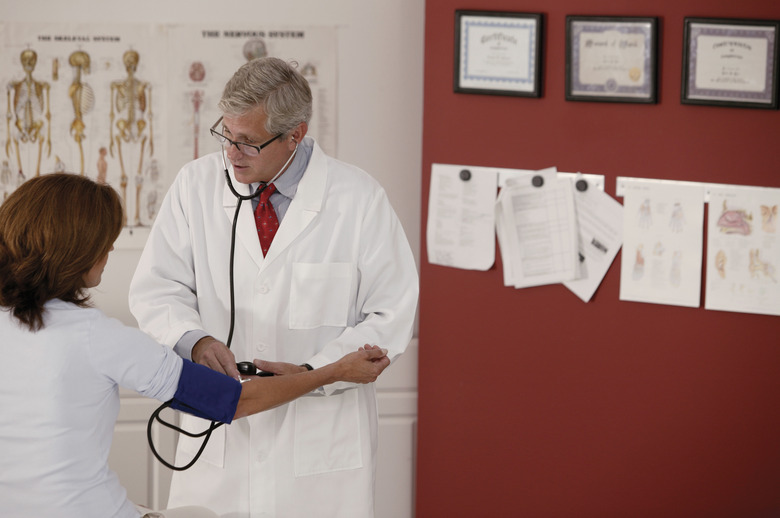Names Of The Structural Components Of The Human Heart
The human heart is arguably the most important organ in the body, because it serves as the primary pump for the circulatory system. To analyze the individual functions of the heart, scientists typically divide the organ into four main regions: the left and right ventricle, and the left and right atrium. Within these four zones are numerous important structures that together allow the human heart to function.
Right Atrium
Right Atrium
The right atrium is where the flow of blood through the heart begins. Blood circulating through the body enters the right atrium, which is on the lower right side of the heart. Blood enters the right atrium through structures including the superior and inferior vena cavas. After entering through the vena cavas, the blood exits the right atrium to the right ventricle, which it does through the tricuspid valve. On both sides of the heart, atria are separated from ventricles by these cuspid valves, also called atrioventricular valves.
Right Ventricle
Right Ventricle
From the right atrium, blood travels next through the tricuspid valve into the heart's right ventricle. The two ventricles of the heart are thick-walled veins that rapidly and efficiently move heart between the atria and back into the body. After moving through the right ventricle, blood moves on to the pulmonary valve, which pushed deoxygenated blood into the lungs, where it receives oxygen. This is a major function of the human heart, which maintains a certain level of oxygenation in the circulatory system's blood.
Left Atrium
Left Atrium
After receiving oxygen in the lungs, blood moves from the lungs back to the heart via the left atrium. The blood re-enters the heart here through a different set of pulmonary valves. In this case, unlike when blood exits the heart for the lungs, the blood now uses the left set of pulmonary veins to return to the left atrium. To move onto the left ventricle, blood exits via the mitral, also known as the bicuspid valve. The oxygenated blood is now prepared to enter the body.
Left Ventricle
Left Ventricle
To enter the body and circulate, blood must travel from the left atrium via the left ventricle. Importantly, the left ventricle is separated from the aorta via the aortic valve. Using the ascending aorta, the blood is now ready to exit the heart and circulate through the body. It does this through a large series of veins and arteries. Some of the most important and primary pathways from the heart include the brachiocephalic artery, the left common carotid artery and the left subclavian artery. These are just some of the largest and most important arteries, but many others exist.
Cite This Article
MLA
Wandrei, Kevin. "Names Of The Structural Components Of The Human Heart" sciencing.com, https://www.sciencing.com/names-structural-components-human-heart-13068/. 24 April 2017.
APA
Wandrei, Kevin. (2017, April 24). Names Of The Structural Components Of The Human Heart. sciencing.com. Retrieved from https://www.sciencing.com/names-structural-components-human-heart-13068/
Chicago
Wandrei, Kevin. Names Of The Structural Components Of The Human Heart last modified March 24, 2022. https://www.sciencing.com/names-structural-components-human-heart-13068/
